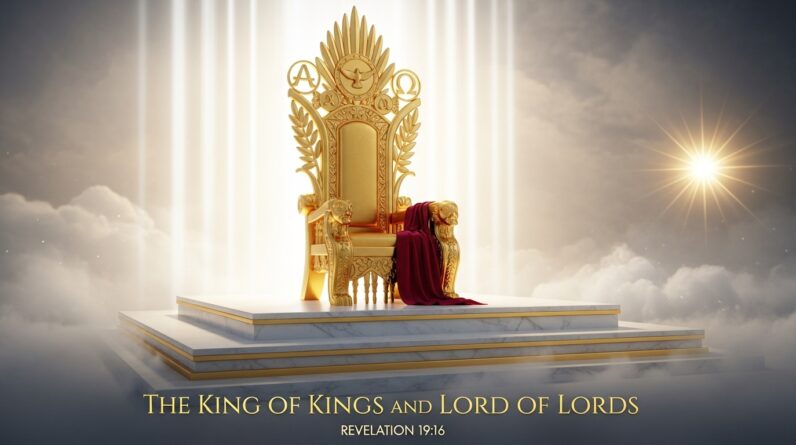Discover the hidden meanings and prophecies of the Book of Revelation. Unravel its symbolism and delve into its profound messages in this informative article.
Have you ever been curious about the mysterious and captivating book known as the Book of Revelation? Delving into its pages, you are transported into a world filled with intricate symbolism and cryptic prophecies. In this article, we will shed light on the enigmatic aspects of the Book of Revelation, peeling back its layers of meaning and unraveling its profound messages. Get ready to embark on a journey of discovery and understanding as we explore the fascinating world of this ancient biblical text.
Historical Background of the Book of Revelation
The author and the context
The Book of Revelation is believed to have been written by the Apostle John towards the end of the 1st century AD, during his exile on the Greek island of Patmos. It is considered one of the most enigmatic books in the New Testament, filled with vivid imagery and apocalyptic visions. John wrote the book during a time of persecution against the early Christian community, and it served as a message of hope and encouragement to the believers.
The audience and the purpose
The Book of Revelation was initially addressed to seven churches in Asia Minor, which were dealing with various challenges and trials. These churches were located in Ephesus, Smyrna, Pergamum, Thyatira, Sardis, Philadelphia, and Laodicea. The purpose was to encourage and strengthen these communities in their faith, while also warning them about the consequences of not remaining faithful to Christ. The book also provides a glimpse into the future, offering a hope-filled vision of the ultimate triumph of God’s kingdom over evil.
Interpretive Approaches to the Book of Revelation
Historicist Approach
The Historicist approach interprets the Book of Revelation as a timeline of historical events, starting from the time of John until the end of the world. It views the symbols and imagery in Revelation as representing specific historical figures, events, and periods. According to this approach, the book describes the rise and fall of empires, the spread of Christianity, and the eventual triumph of God’s kingdom.
Preterist Approach
The Preterist approach sees the events described in Revelation as primarily fulfilled in the past, particularly during the time of the early church. It interprets the symbols and prophecies as referring to specific events that were relevant to the original audience. The Preterist view emphasizes the imminent judgment of God upon Jerusalem and the destruction of the temple in 70 AD.
Futurist Approach
The Futurist approach believes that the events described in the Book of Revelation are mostly yet to come, particularly during the end times. It interprets the symbols and prophecies as predictions of future events, including the reign of the Antichrist, the Great Tribulation, and the Second Coming of Christ. This approach emphasizes the literal fulfillment of these prophecies.
Idealist Approach
The Idealist approach sees the Book of Revelation as a symbolic portrayal of the ongoing spiritual battle between good and evil. It interprets the symbols and imagery as representing universal and timeless truths rather than specific historical events. The Idealist view emphasizes the overarching themes of God’s sovereignty, human free will, and the ultimate victory of good over evil.
Symbolism in the Book of Revelation
The use of symbols in biblical literature
The Book of Revelation, like many other books in the Bible, extensively uses symbols and imagery to convey its message. Symbolism was a common literary device in ancient literature, allowing writers to express complex ideas and concepts in a more vivid and memorable way. It also helped to protect the message from those who might seek to suppress or persecute the early Christians.
Common symbolic elements in the book
The Book of Revelation is filled with numerous symbolic elements that occur throughout its chapters. Some of the most common symbols include the Lamb, representing Christ as the sacrificial and victorious Messiah; the Dragon, symbolizing Satan and evil forces; the Seven Seals, representing the unfolding of God’s plan; and the Four Horsemen, symbolizing conquest, war, famine, and death.
Interpreting the symbols in Revelation
Interpreting the symbols in Revelation requires careful consideration of their historical, cultural, and biblical context. It is important to avoid overly literal interpretations and instead focus on the underlying theological and spiritual meanings. The symbols in Revelation often serve as metaphors for spiritual realities and cosmic events. A thorough study of the broader biblical narrative and the use of symbolism in other biblical books can help shed light on the meaning of the symbols in Revelation.
Key Themes and Messages in the Book of Revelation
The victory of Christ over evil
One of the central themes of the Book of Revelation is the ultimate victory of Christ over evil. It portrays Jesus as the conquering Lamb who has triumphed over sin, death, and Satan through his sacrificial death and resurrection. This theme serves as a source of hope and encouragement for believers facing persecution and challenges in their faith.
The struggle between good and evil
The Book of Revelation vividly depicts the ongoing spiritual battle between good and evil. It portrays the conflict between the forces of God’s kingdom and the forces of Satan and his allies. This theme emphasizes the reality of the spiritual warfare that believers face and encourages them to remain faithful to God in the face of opposition.
The ultimate triumph of God’s kingdom
The Book of Revelation presents a vision of the ultimate triumph of God’s kingdom over all opposing forces. It foretells the establishment of the New Jerusalem, a new heaven and earth where God’s presence will dwell among his people. This theme provides believers with a future hope and assurance that no matter the challenges they face in this world, God’s kingdom will ultimately prevail.
The Seven Churches in Revelation
The purpose of the letters to the churches
The Book of Revelation contains seven letters addressed to the seven churches in Asia Minor. These letters serve as a direct message from Christ to the specific churches, addressing their unique strengths, weaknesses, and challenges. The purpose of these letters was to encourage and exhort the churches to remain faithful to Christ, correct any errors or compromises in their faith, and provide guidance for their individual contexts.
The significance of each church’s message
Each of the seven churches in Revelation has a specific message that reflects their spiritual condition and challenges. For example, the church in Ephesus is commended for its perseverance but rebuked for losing its first love. The church in Smyrna is encouraged to endure persecution faithfully. The messages to the churches emphasize the importance of faithfulness, repentance, and obedience to Christ in every situation.
The Four Horsemen of the Apocalypse
Understanding the symbolism of the horsemen
The Four Horsemen of the Apocalypse, described in Revelation 6, are symbolic representations of different aspects of God’s judgment and the consequences of human sin. The white horse represents conquest or false peace, the red horse stands for war and bloodshed, the black horse symbolizes famine and scarcity, and the pale horse represents death and the grave. These horsemen serve as a reminder of the consequences of turning away from God and the need for repentance.
The implications of their arrival
The arrival of the Four Horsemen in the Book of Revelation signifies the unleashing of God’s judgment upon the world. These judgments are a result of human sin and rebellion against God. The horsemen’s presence serves as a warning and a call to repentance, reminding believers of the consequences of unfaithfulness and urging them to remain steadfast in their commitment to Christ.
The Beast and the Anti-Christ
Identifying the beast and its characteristics
The Beast, also known as the Antichrist, is a central figure in the Book of Revelation. It is described as a powerful and deceptive ruler who opposes God and persecutes the followers of Christ. The identification of the Beast has been a subject of much speculation and interpretation throughout history. Some interpret it as a specific historical figure, while others see it as a symbol of oppressive political and religious systems.
The role of the anti-christ in biblical prophecy
The concept of the Antichrist appears in various biblical prophecies, including those found in the Book of Daniel and the writings of the Apostle Paul. The Antichrist is often associated with a period of intense persecution against believers and a time of great tribulation. The role of the Antichrist is to deceive people, promote false worship, and oppose God’s kingdom. Ultimately, the Antichrist will be defeated by Christ at his Second Coming.
The 144,000 and the New Jerusalem
Interpreting the symbolic significance of the 144,000
The mention of the 144,000 in the Book of Revelation has been the subject of much debate and interpretation. Some interpret them as a literal number of individuals who will be chosen by God for a special mission during the end times. Others see them as a symbolic representation of the larger community of believers who will be faithful to God. The 144,000 might symbolize the completeness and perfection of God’s redeemed people.
Understanding the concept of the New Jerusalem
The New Jerusalem is a key concept in the Book of Revelation, representing the ultimate fulfillment of God’s kingdom. It is described as a glorious city where God will dwell with his people, and there will be no more pain, sorrow, or death. The New Jerusalem symbolizes the restoration and renewal of all things, and it serves as a source of hope and encouragement for believers in the midst of trials and challenges.
The Battle of Armageddon
Exploring the significance of the battle
The Battle of Armageddon is a climactic event described in the Book of Revelation. It represents the final confrontation between the forces of evil and the forces of God’s kingdom. The battle symbolizes the ultimate defeat of Satan and his allies, and the establishment of God’s eternal reign. The Battle of Armageddon highlights the ultimate triumph of good over evil and serves as a reminder that God is in control of history and will bring justice to the world.
Different interpretations of Armageddon
The Battle of Armageddon has been interpreted in various ways throughout history. Some see it as a literal battle that will take place in a specific location in the Middle East. Others understand it as a symbolic representation of the cosmic struggle between good and evil. Some believe that Armageddon refers to a series of spiritual battles that take place throughout history, leading up to the final victory of God’s kingdom.
The Thousand-Year Reign
Understanding the concept of the millennial reign
The concept of the millennial reign, also known as the Thousand-Year Reign, is described in Revelation 20. It refers to a period of time during which Christ will reign on earth, and Satan will be bound. The exact nature and duration of this reign have been a subject of debate and interpretation. Some understand it as a literal one thousand-year period, while others see it as a symbolic representation of a long period of time.
Different views on the duration and nature of the reign
There are different views on the duration and nature of the millennial reign. Some interpret it as a literal one thousand-year reign of Christ on earth, following his Second Coming. They believe that it will be a time of peace, justice, and the fulfillment of God’s promises. Others understand it metaphorically as the present age of the church, where believers participate in the reign of Christ through the presence of the Holy Spirit. Regardless of the interpretive differences, the millennial reign represents the hope and anticipation of a future state of righteousness and peace.








